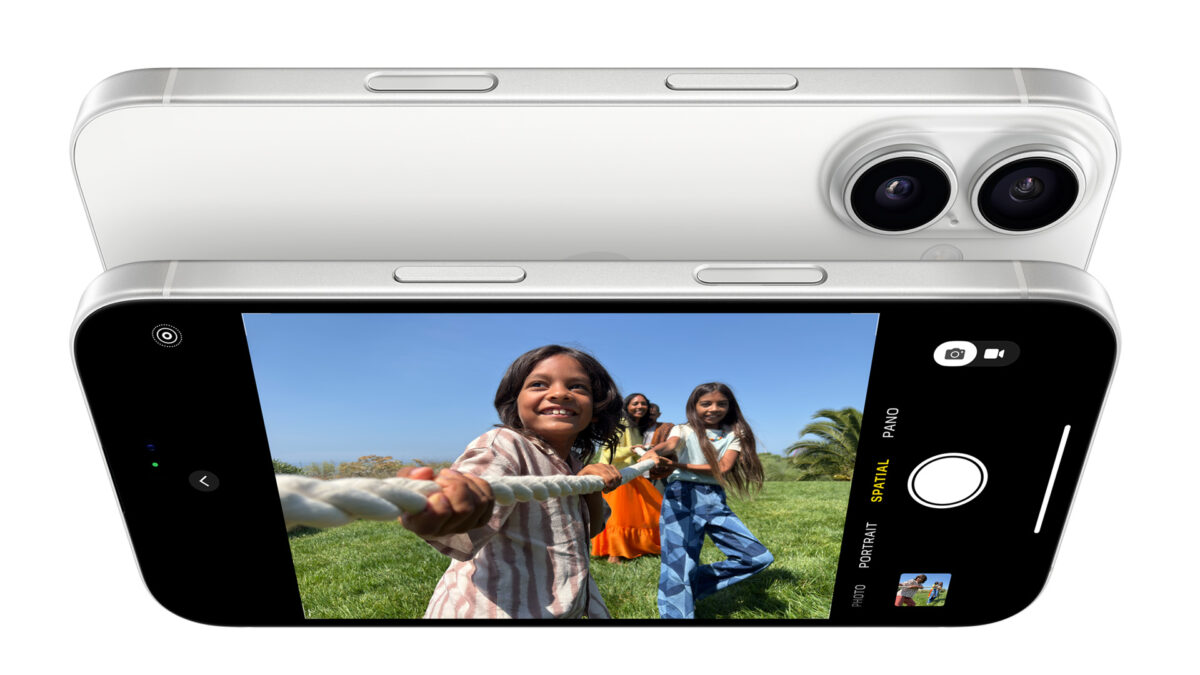With the iPhone 16, Spatial Videos & Photos are now a standard feature

Every iPhone 16 model will support spatial video and photo capture. A big step toward democratizing the immersive format.
With yesterday's announcement of the iPhone 16 comes news of future support for spatial video and photos on iPhones:
- All iPhone 16 models support spatial video capture. Previously, only iPhone 15 Pro, iPhone 15 Pro Max, and Apple Vision Pro could record spatial video. Now the iPhone 16, iPhone 16 Plus, iPhone 16 Pro and iPhone 16 Pro Max can do the same.
- All iPhone 16 models will also be able to take spatial photos. Previously, this was only possible with Apple Vision Pro. However, spatial photos can be taken with iPhone 15 Pro and iPhone 15 Pro Max using the Spatialify iOS app.
- Only iPhone 16 Pro and iPhone 16 Pro Max can also record spatial video with spatial audio for lifelike sound, thanks to their four built-in microphones.
Spatial Video is Apple's name and proprietary format for stereoscopic video in a rectangular format. Similarly, spatial Photos are stereoscopic photos.
The depth of spatial videos and photos can only be seen with a stereoscopic output device such as Apple Vision Pro, Meta Quest (see methods 1 and 2) or Pico 4 Ultra. MIXED has published a photo gallery with nearly 250 spatial photos that can be viewed on Meta Quest. They were taken with an iPhone 15 Pro and Spatialify.
Making spatial video and photos a standard feature of the iPhone will enable a much larger number of people to capture immersive media, helping to drive adoption of the formats.
MIXED asked Spatialify developer Wu Tian two questions about the iPhone 16 and the future of the iOS app.
MIXED: Why did Apple wait until now to support spatial photo capture on iPhone? To have another selling point for iPhones 16 or are there camera improvements that make spatial photos better on iPhone 16?
Wu Tian: I think it makes sense that the iPhone 16 Pro series supports spatial photos, as the new 48MP ultra-wide lens can natively crop to a 12MP spatial photo frame, resulting in better quality. But, the iPhone 16 also supports spatial photos, and I’m not yet sure about the technical details. It might be because its ultra-wide lens has also seen some improvements, allowing for better consistency with the main camera, or it could simply be a marketing strategy. Additionally, Apple has further standardized the spatial photo format in iOS 18, which could be another reason.
MIXED: Can you tell already how the iPhone 16 will impact Spatialify?
Wu Tian: The iPhone's native support for spatial photos will definitely attract many users who originally used Spatialify for photo capture. I think what I can do in this regard is to keep up with the quality of the system camera and offer some convenient or advanced features. The current plan is to launch Spatialify 2.0 around September 16. One of the major features will be the ability to assign the spatial camera to Camera Control, the Action Button, or the lock screen, allowing it to be launched without unlocking the iPhone. This feature will also be available on the iPhone 15 Pro.
At the same time, I believe that the iPhone’s native spatial photo capability makes Spatialify more valuable in another way. Version 2.0 will introduce a new way for viewing spatial photos directly on the phone screen, the details will be revealed at launch.
Note: Links to online stores in articles can be so-called affiliate links. If you buy through this link, MIXED receives a commission from the provider. For you the price does not change.